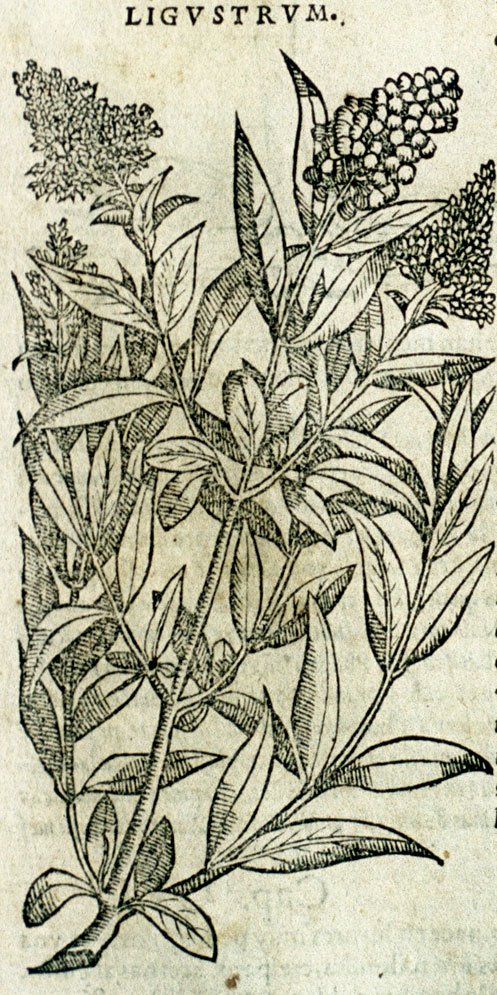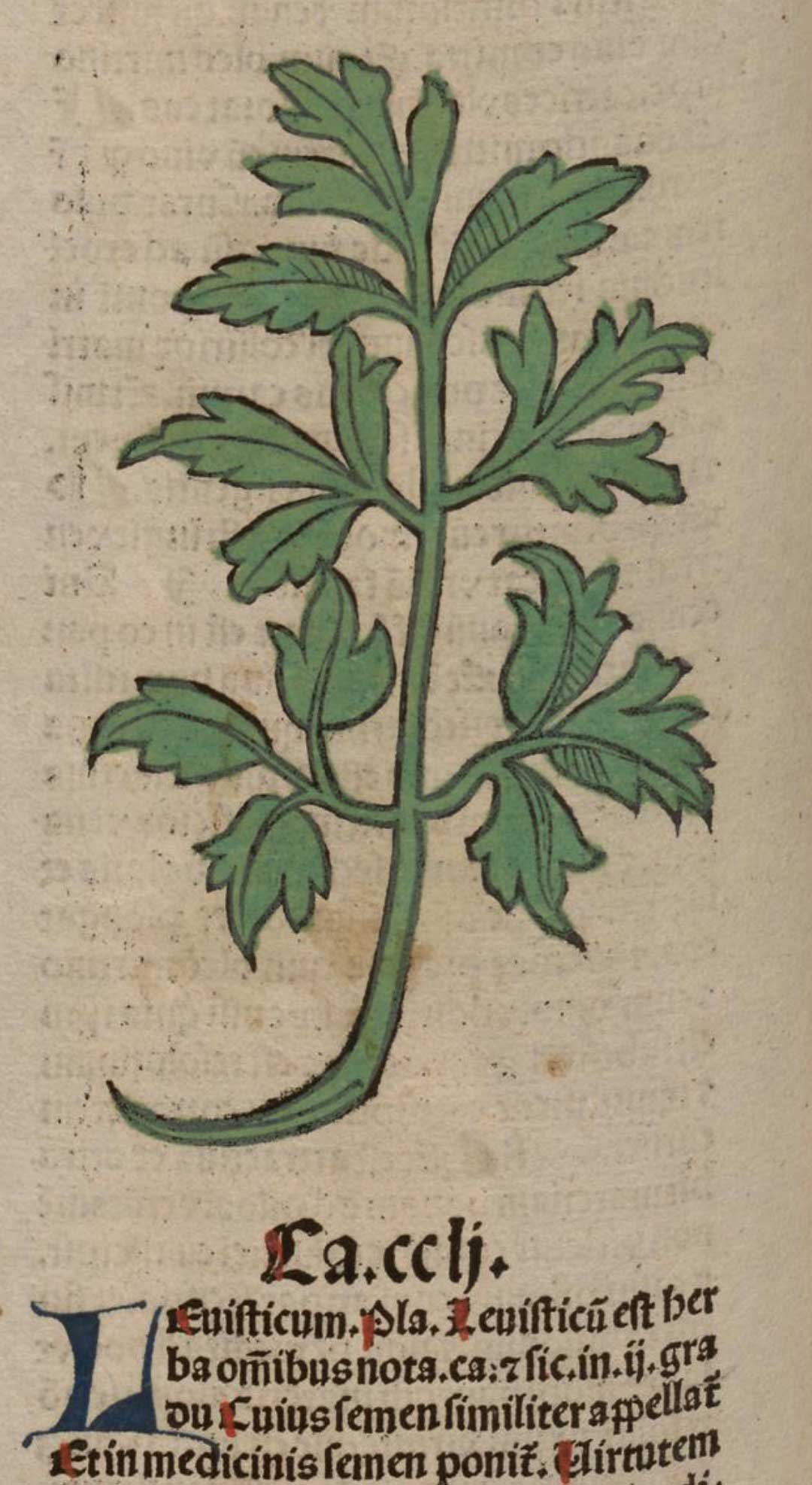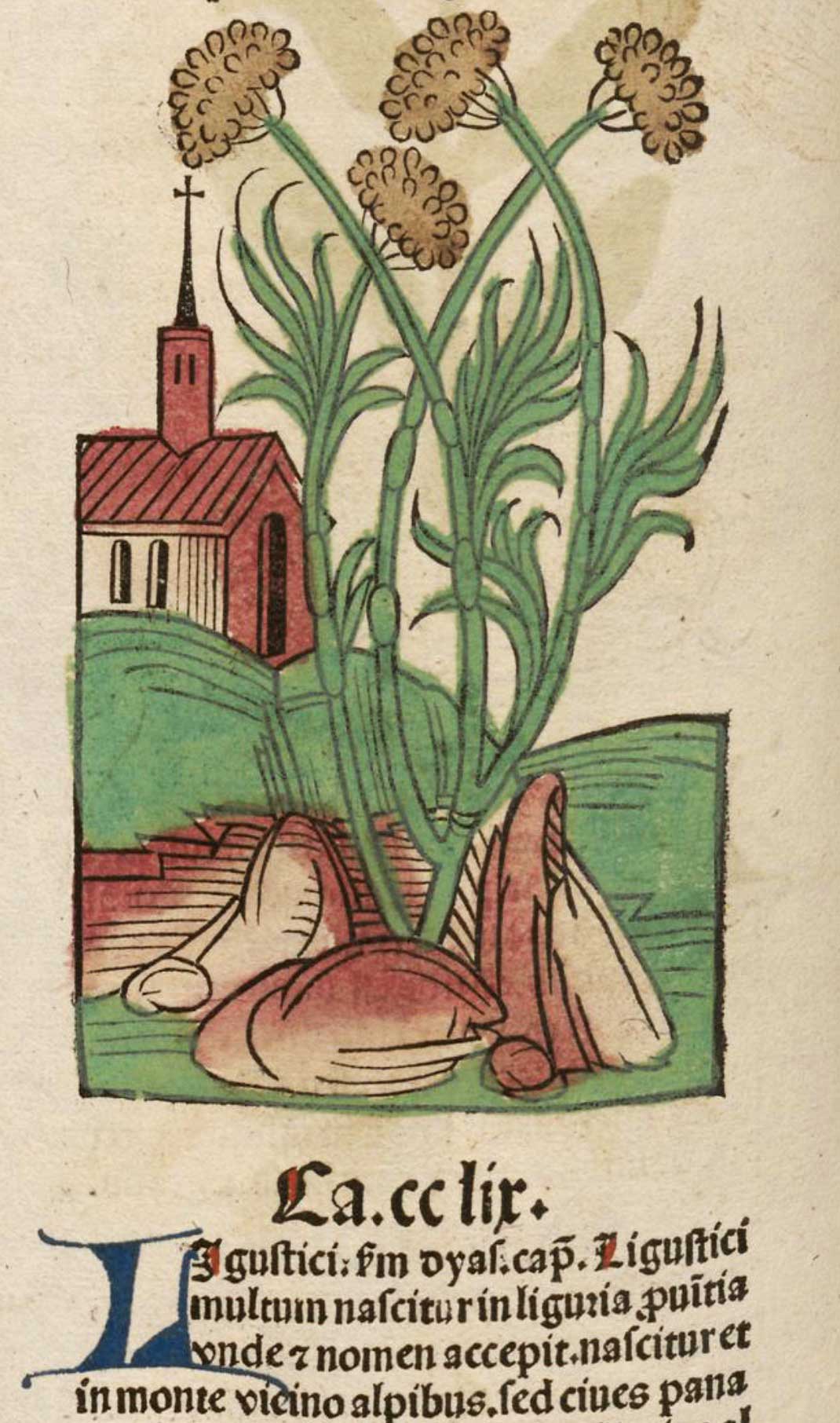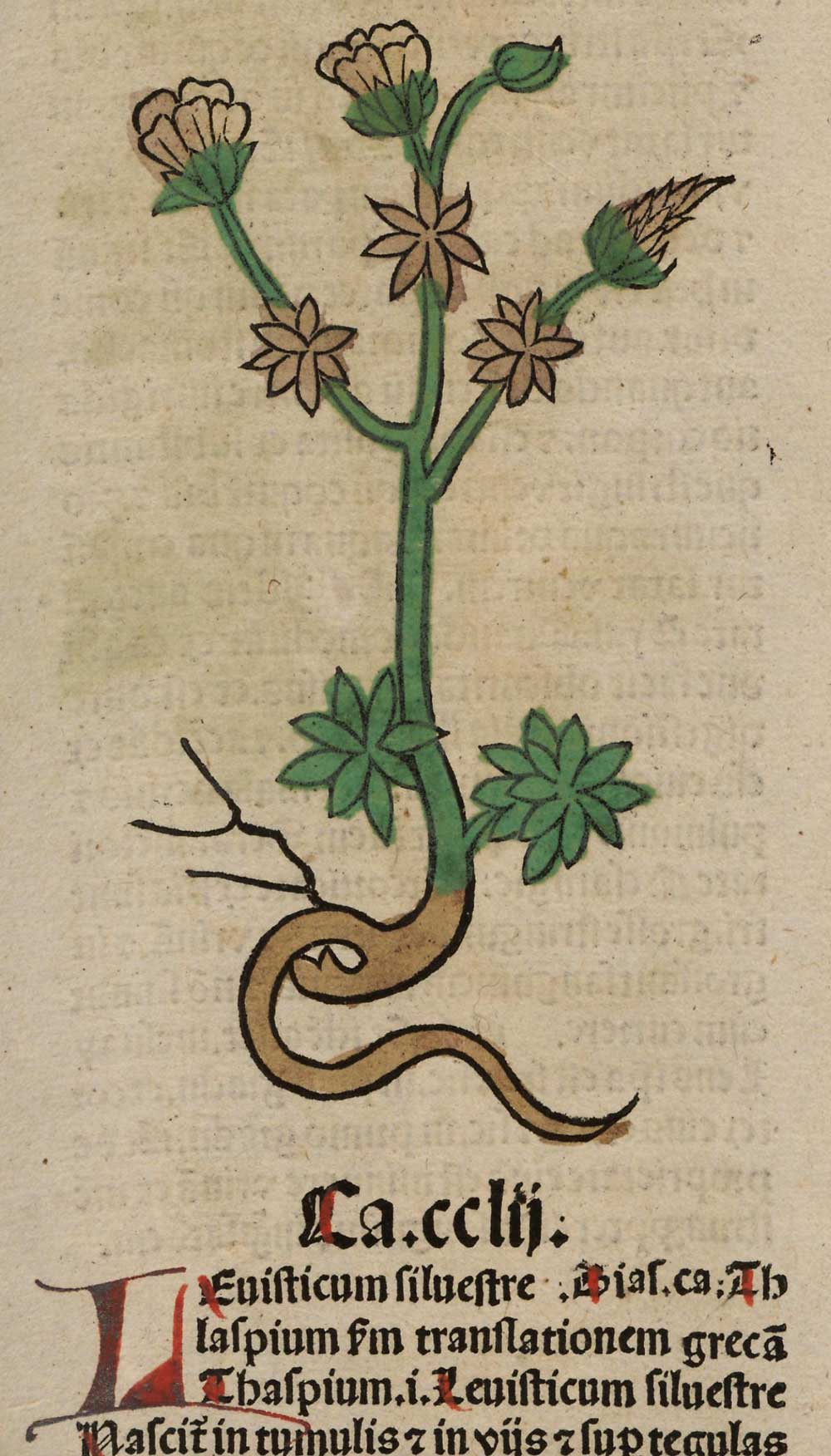ligusticum, which is lovage, carried from Liguria, which is the coast of Genoa.
Original French: Liguſticum, c’eſt Liueſche, apportée de Ligurie, c’eſt la couſte de Genes.
Modern French: Ligusticum, c’est Livesche, apportée de Ligurie, c’est la couste de Gènes.
Among the plants that have retained the names of the regions from which they were formerly transported.
Notes
Levisticum
Ligusticum
Levisticum silvestre
Ligustrum [?]

Ligustrum vulgare L.
English: common privet
ligusticum
Ligusticum silvestre est in Liguriae suae montibus, seritur ubique; suavius sativum sed sine viribus. panacem aliqui vocant; Crateuas apud Graecos cunilam bubulam eo nomine appellat, ceteri vero conyzam, id est cunilaginem, thymbram vero quae sit cunila.
Lovage grows wild in the mountains of its native Liguria, but is cultivated everywhere; the cultivated kind is sweeter but lacks strength. Some people call it panax, but the Greek writer Crateuas gives that name to cow-cunila, though all others call that conyza [Elecampane, or fleabane], which is really cunilago, while real cunila they call thymbra.
lovage
In the original Liueſche which Cotgrave interprets Lovage of Lombardy. Cambridge Dictionary says the same of Ligusticum, and reason good.
ligusticum, c’est livesche
Plante médicinale.
Ligusticum
Plante médicinale. Livesche vient de ligusticum, par le changement du g en v, et par contraction, et ligusticum de Liguria.
Ligusticum
Pliny xix. 5, § 50.
ligusticum
Ligusticum, Livèche, de Liguria, parc qu’elle se trouve communément sur la côte génoise. « Ligisticum silvestre est in Liguriae suæ montivus », dit Pline, XIX, 50. Genre d’Ombelliféres comprenant div. est. de Corse, des Alpes, des Pyrénées. S’agit-il ici de Ligusticum levisticum, L. ? (Paul Delaunay)
Ligusticum
Pline, XIX, i.
ligustrum
ligustrum. [Latin ligustrum privet, adopted by Linnæus (Hortus Cliffortianus (1737)) and earlier botanists as the name of a genus.]
privet.
1664 John Evelyn Kalendarium hortense in Sylva, or a discourse of forest-trees 71 July… Flowers in Prime, or yet lasting… Oleanders red and white, Agnus Castus, Arbutus, Yucca, Olive, Ligustrum, Tilia, &c.


